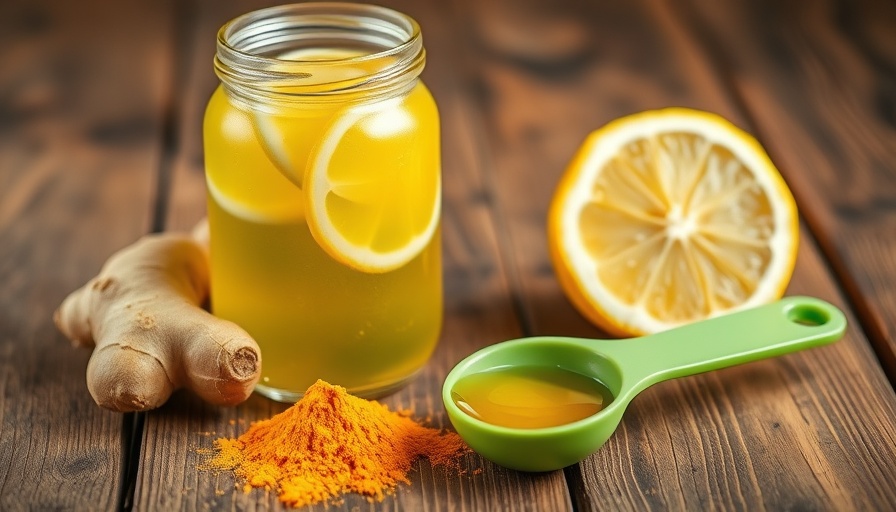
Start Your Day Right: The Detox Tonic You Need
Imagine starting your morning with a refreshing cup of detox tonic that not only awakens your senses but also boosts your body’s natural cleansing systems. This simple yet potent drink harnesses the power of carefully selected ingredients to help remove toxins from your lymph glands, colon, and bladder overnight. Let’s delve into the benefits of this tonic and how it can elevate your well-being.
The Need for Detoxification in Our Lives
In our modern world, we frequently expose ourselves to an accumulation of toxins through the air we breathe, the food we consume, and even the water we drink. These toxins can lead to various health issues, including fatigue, bloating, and a weakened immune system. This detox tonic acts like a gentle cleanse, helping your body release what’s been weighing you down and revitalizing your energy.
Key Ingredients Explained: Nature's Power Players
Each ingredient in this tonic has been thoughtfully chosen for its unique detoxifying properties.
Lemons: The Detox Superstar
Lemons are well-known for their alkalizing effects. While they taste acidic, their metabolism in the body actually promotes alkalinity, which helps balance your pH levels. Rich in vitamin C, lemons not only support immune function but also help reduce inflammation. Moreover, they stimulate the lymphatic system, effectively aiding in detoxification.
The Benefits of Cinnamon for Mood and Blood Sugar
Adding cinnamon to your morning regimen can offer benefits beyond flavor. This spice is renowned for its ability to stabilize blood sugar levels, which translates to steady energy and improved mood. With its rich antioxidant properties, cinnamon can combat oxidative stress, promoting overall well-being.
Powerful Duo: Ginger and Turmeric
Ginger and turmeric are stars in the world of natural health. Ginger aids digestion, reduces nausea, and bolsters the immune system. On the other hand, turmeric, with its active compound curcumin, serves as a potent anti-inflammatory, supporting liver function and bolstering mental health. Together, they create a formidable team for enhancing lymphatic drainage and keeping your gut healthy.
Cayenne Pepper: The Fire Starter
Cayenne pepper is filled with capsaicin, known for igniting circulation and stimulating various detox pathways. This not only enhances the efficacy of the tonic but also energizes your body, prepping you for the day ahead.
Emotional and Human Connection: Why Detox Matters
Detoxification is more than just a physical cleanse; it's an emotional reset. Many individuals experience stress and anxiety in their daily lives, and feeling sluggish can exacerbate these challenges. By cleaning out the toxins through your lymphatic system and promoting better gut health, you may find your mood improving, along with your energy levels. This tonic could be your first step toward a brighter, more empowered day.
Practical Steps: How to Integrate This Tonic Into Your Routine
Incorporating this morning tonic into your routine is simple. Mix freshly squeezed lemon juice, a dash of cinnamon, grated ginger, turmeric, and cayenne pepper in warm water. Enjoy it on an empty stomach to kickstart your detoxification process. Pairing it with a healthy breakfast can further enhance your day’s start.
Common Misconceptions About Detoxing
A common myth surrounding detoxification is that it requires extreme fasting or extensive diets. In reality, gentle detox methods such as this tonic can be more effective and accessible. By integrating small changes into your routine, you can gradually support your body in its natural cleansing processes without resorting to drastic measures.
Inspiration for a Healthier Lifestyle
Remember, the aim of detoxing is to foster a healthier, more vibrant you. Each ingredient in this detox tonic serves not just a physical function but plays an emotional role in helping you reclaim your health. So why not empower yourself by starting your day with this nourishing drink?
 Add Row
Add Row  Add
Add 




Write A Comment